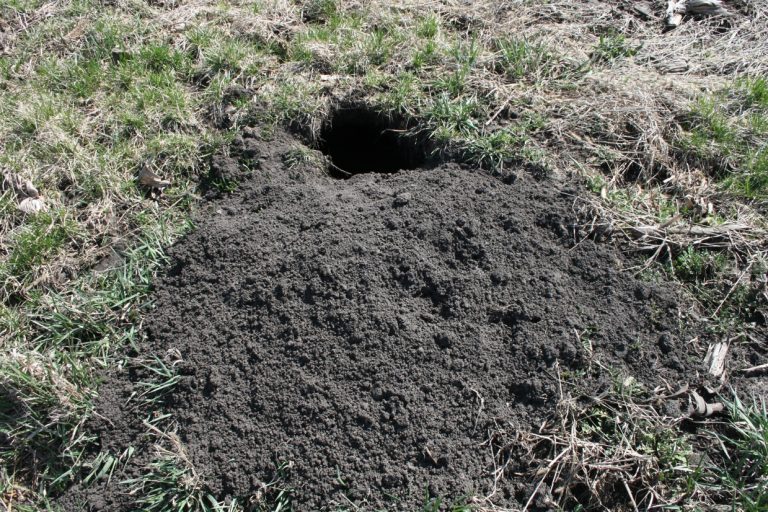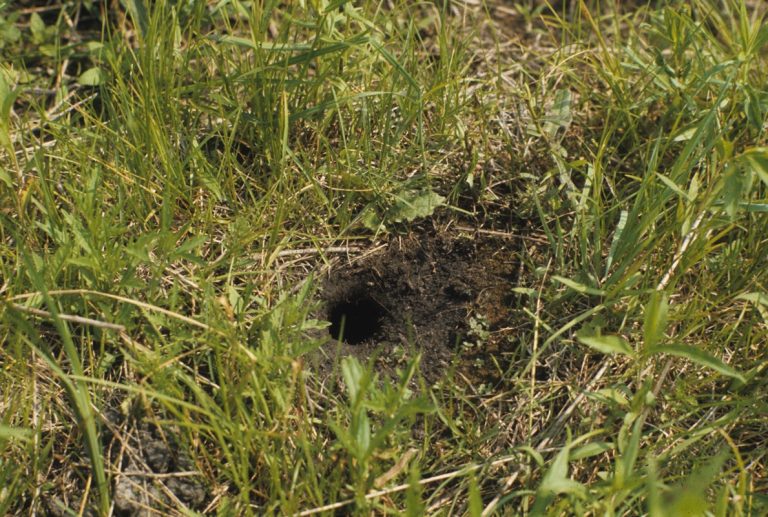Several wildlife species will burrow under buildings, porches, or decks. Large burrow holes (four inches or more in diameter) are typically made or used by skunks or foxes. Coyotes, badgers, and woodchucks (also known as groundhogs) also dig and use burrows, but the burrow hole tends to be larger (10 to 14 inches in diameter). Muskrat, mink, and weasel burrows tend to be near water.
Smaller burrows (three inches or less in diameter) are usually made by chipmunks, thirteen-lined ground squirrels, voles, crayfish, or snakes. Small holes outside the home near foundations or under sidewalks are often used by chipmunks. Thirteen-lined ground squirrels make multiple burrow entrances and prefer areas of short grass. Crayfish holes will be found near water and look like small tubes of mud with a hole in the middle.
If you have seen the animal at its burrow and know which species it is, the Identify Wildlife page provides wildlife damage prevention and control methods for each species. If you aren’t sure what species is using the burrow, the Discover Animal Signs page provides photos to assist in identification.

Photo: Laura Kammin

Photo: Willowbrook Wildlife Center
The Wildlife Illinois website was authorized by the Illinois Department of Natural Resources (IDNR) in partial fulfillment of project W-147-T. The website was developed by the National Great Rivers Research and Education Center, 2wav, and the IDNR in partnership with the United States Department of Agriculture Animal and Plant Health Inspection Service Wildlife Services and University of Illinois Extension to provide research-based information about how to coexist with Illinois wildlife.